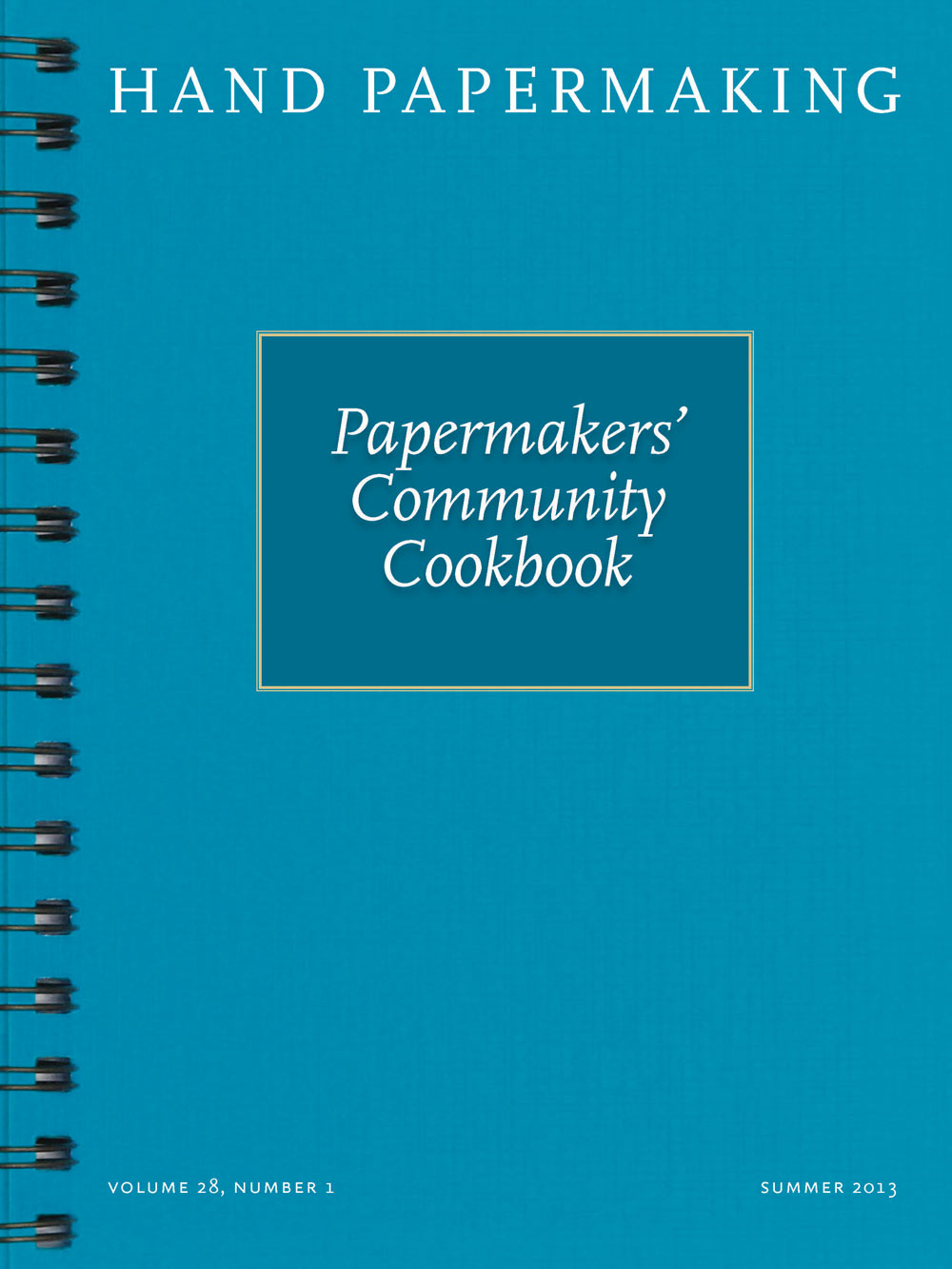It is interesting to note Chung's history. She grew up in South Korea and then moved to the United States, receiving her BFA in painting from Rhode Island School of Design, and her MFA from Cranbrook Academy of Art. She teaches the making of joomchi in courses in the United States, and widely throughout Europe. Her workshops and this book provide in-depth information on the traditional craft as well as adaptations Chung has developed and utilized in her own work. She has curated exhibitions featuring artists who use joomchi (many of them her students) and this book is a culmination of her experiences as an artist, teacher, and practitioner dedicated to carrying on a tradition. Korean papermaking is not something that has been widely written about in English. Chung wisely begins by giving us a brief history of hanji (Korean handmade paper, mainly using the inner bark of paper mulberry or dak in Korean). Hanji has been used in Korea for centuries for calligraphy and printing, and to create numerous products such as clothing, baskets, and furniture. Perhaps the most unique application of hanji is the traditional oiled paper used for flooring. Its long fibers and sheet strength make hanji the perfect paper for joomchi, which Chung describes next in the book. Joomchi is something like felted paper: sheets of hanji, brushed with water, layered one on top of another, and then put through a process of rubbing, squeezing, crumpling, and kneading. During this treatment, the long dak fibers intertwine and adhere to each other, causing the layers of paper to bond. The finished surface of joomchi has an interesting texture, similar to leather. In the wet stage, sheets of joomchi can be manipulated into sculptural forms. The book features a gallery of beautifully photographed works by Jiyoung Chung, divided into sections representing various forms of joomchi: painterly, sculpture/body ornament, multi-layered, opened, and stitched. This section of the book is like an artist book, with a few poetic phrases spread throughout: "the holes, layers, and free mounting of my work represent the whispers and breaths between conversations" and "Hidden and invisible dust in a room is only revealed when the light comes in." Now that our appetite is whetted, we arrive at the detailed stepby- step instructions for making traditional joomchi, followed by several contemporary variations. Chung tells us how to set up a workspace and includes a lot of tips and how-to photos for this process that requires not much more than paper and water. She also contrasts many interesting techniques, such as how sewing a line with a machine will remain fixed in place during the crumpling process, whereas threads laid between the layers will move when the paper is kneaded. Some of the steps appear redundant at first, but isn't repetition key to mastering a craft? Chung illustrates that using the same technique with different materials often yields unique results. This shows the work of a well-practiced expert and an observant teacher, one who has witnessed and appreciates the "mistakes" that are often made by her students. The phrase "repeat this hundreds of times" appears often in the instructions. For many of us, dedicating a long stretch of time to a process is daunting. I had to giggle when I read Chung's recommendations for "emergency procedures" for those times when one cannot do it all in one sitting. The impulse is to speed up processes and figure out ways to get things done quickly, but from my own experience in hand papermaking, there is usually a reason for these slow, tedious methods, and the results are generally worth it. I took a workshop with Chung last spring at Oregon College of Art & Craft in Portland, Oregon. Chung handed out a processing chart for joomchi that also appears in the book. This series of steps helps to break up the monotony. You begin by folding the paper in various directions and kneading it for certain lengths of time, followed by unfolding, refolding in another fashion, and then kneading again. I have to admit that I have never kneaded bread for quite as long as the recipe calls for, and I was guilty of the same when I took Chung's workshop. In fact I did not have time to take the full two-day workshop and just sat in for a day. I am certain that even the full two days would not have been long enough time to absorb these techniques. Processes like making joomchi take time to refine, and the question soon arises: when is it done? Chung tells us that "the key to bonded layers is to unfold the Joomchi and hold it up to the light: many small needle-like holes evenly spread throughout the paper indicate the layers are combining." To do this competently surely takes practice. Chung's writing is not formulaic, it is fresh—and I like that. It is almost like you are in her classroom. Throughout the how-to section of the book, we are treated to images of the work of other artists who practice these techniques as Chung describes various methods she has developed with joomchi, from painterly and lacey to woven, cut, sewn, and burned. The layout of the book leaves a bit to be desired, but the content is solid. With the publication of Joomchi and Beyond, Jiyoung Chung has contributed an important resource to the world of paper art.






